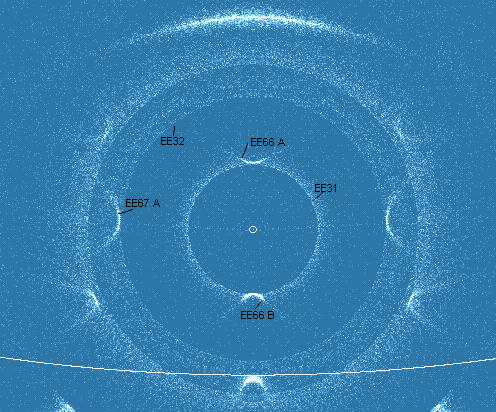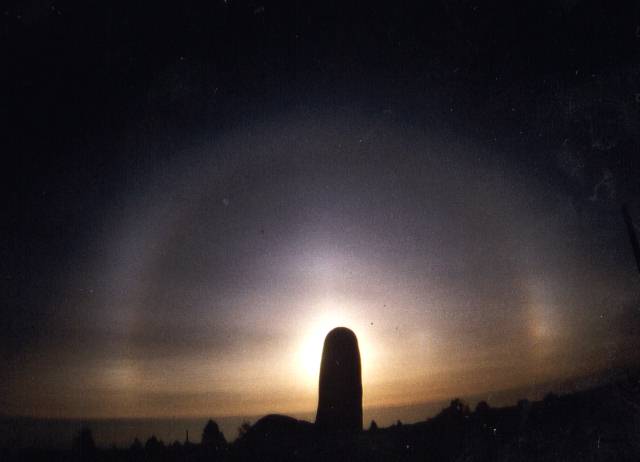- Crystal orientation:
- main axes vertikal
- Path of light:
- 13-6 (upper), 3-26 (lower)
- Occurrence:
- rarely
EE 66

Description:
Sometimes white brightenings can be observed at the upper and lower parts of the 9°-halo. These are the 9°-parry-shaped arcs which are also called 9°-parhelia. They almost always appear together with other halos caused by pyramid-shaped crystals. At sun elevations of 30° or more the upper one of these arcs cannot form. The lower one does not appear at sun elevations of 50° or more. The simulation above uses pyramid—shaped crystals with an almost ideally orientated vertical main axis (tilted angle 20). In nature, however, this almost never happens. That is the reason why the 9°-parry-shaped arcs can only be seen as brightenings in the 9°-halo and not as an arc which curves away from the sun.

Computer simulation for a sun elevation of 20°.
The 9°-parry-shaped arcs (EE 66 A+B) are situated at the upper and at the lower part of the 9°-halo (EE31).
Formation:
9°-parry-shaped arcs form in pyramid-shaped crystals with a vertically orientated main axis. The main axis passes the two base faces (Numbers 1 and 2 in the sketch above). Such crystals usually are plate-shaped crystals with pyramid-shaped extensions on their base faces.


